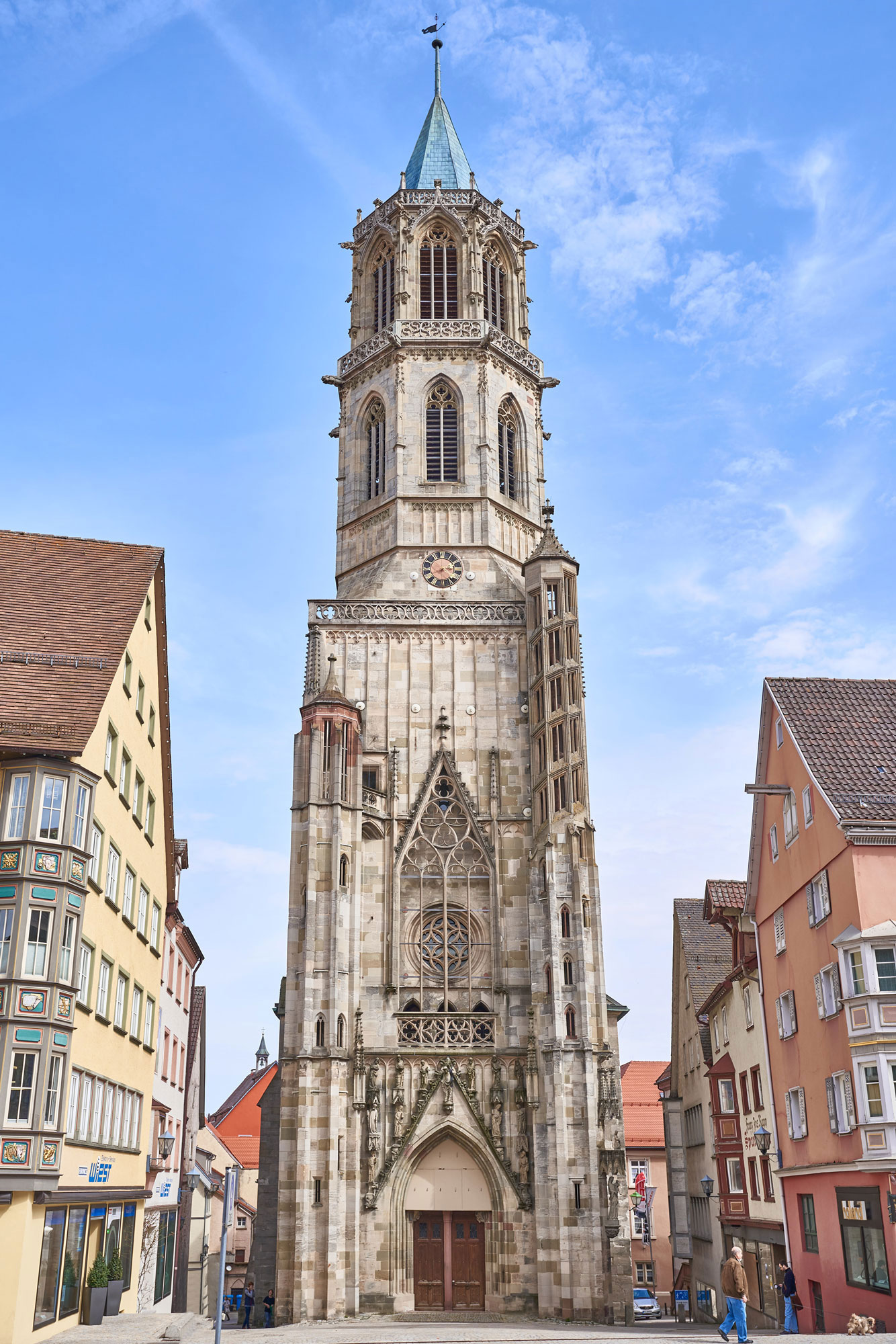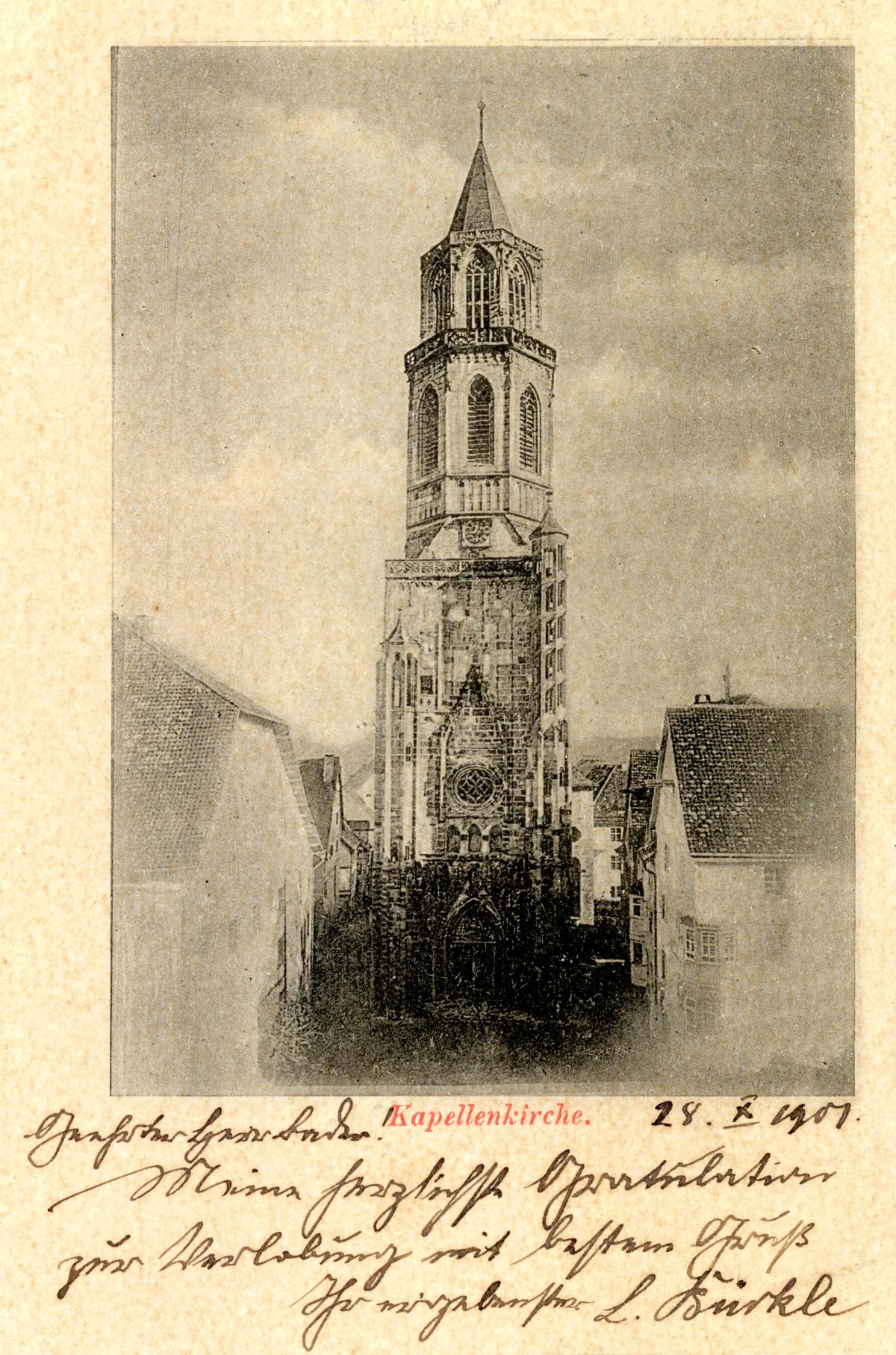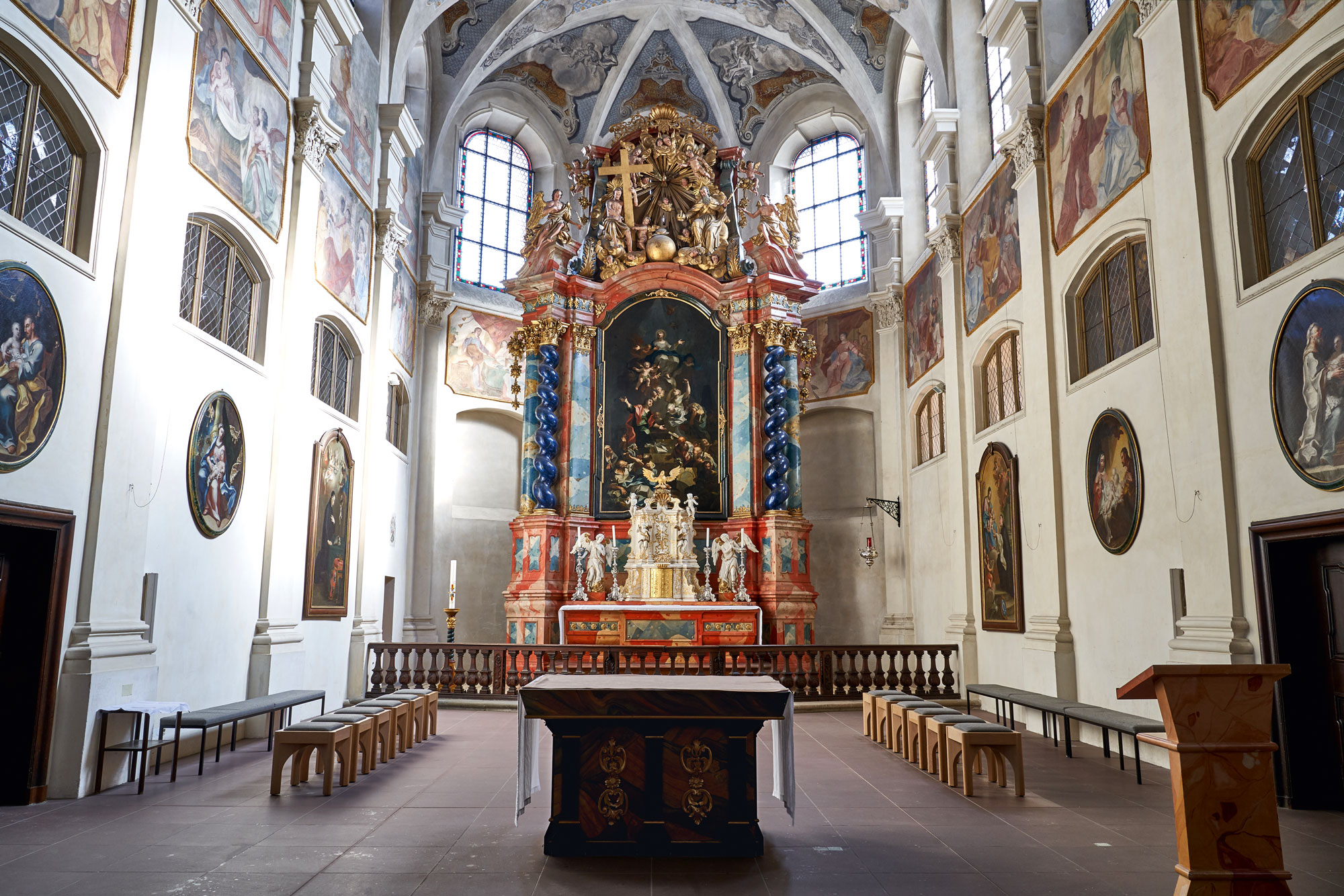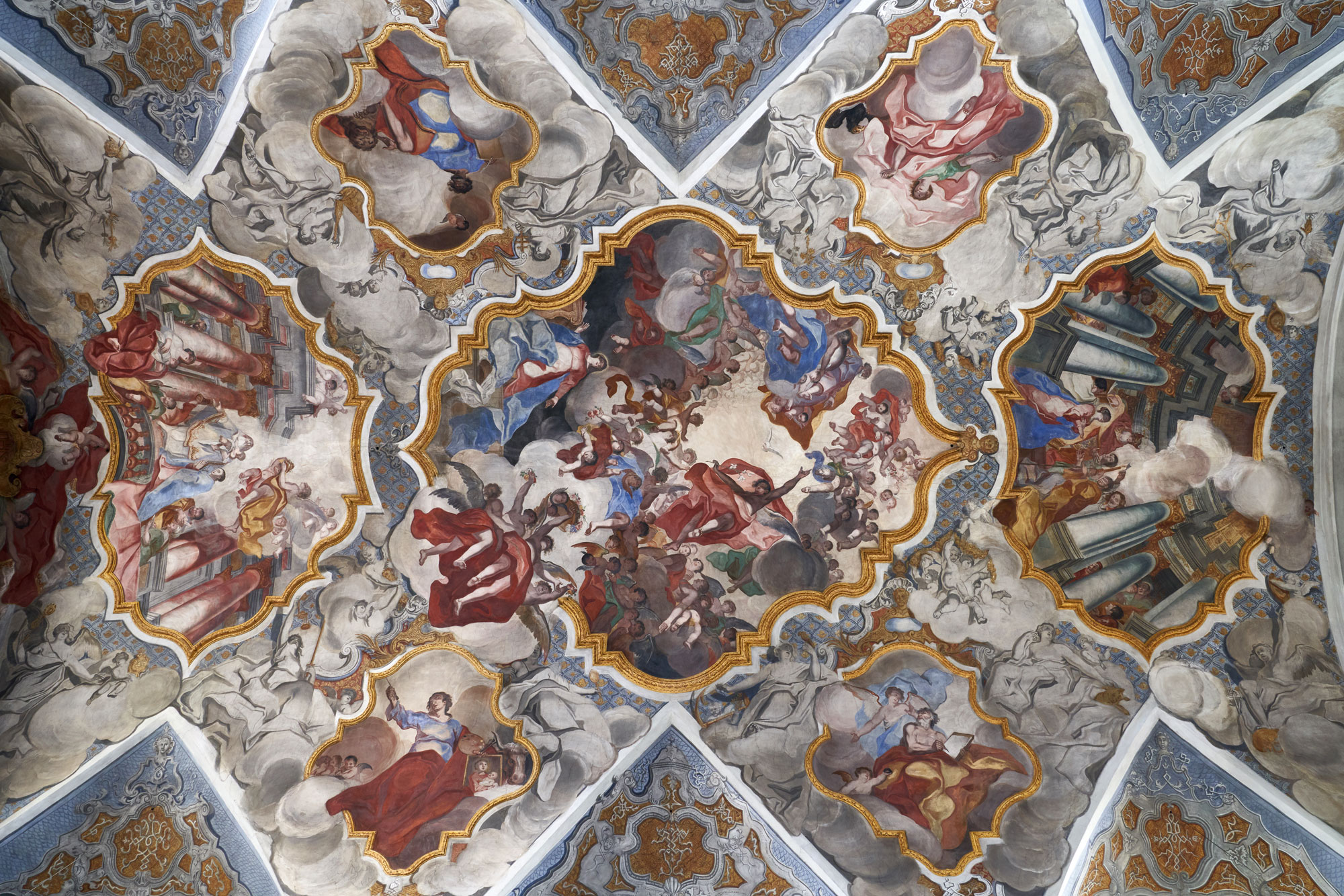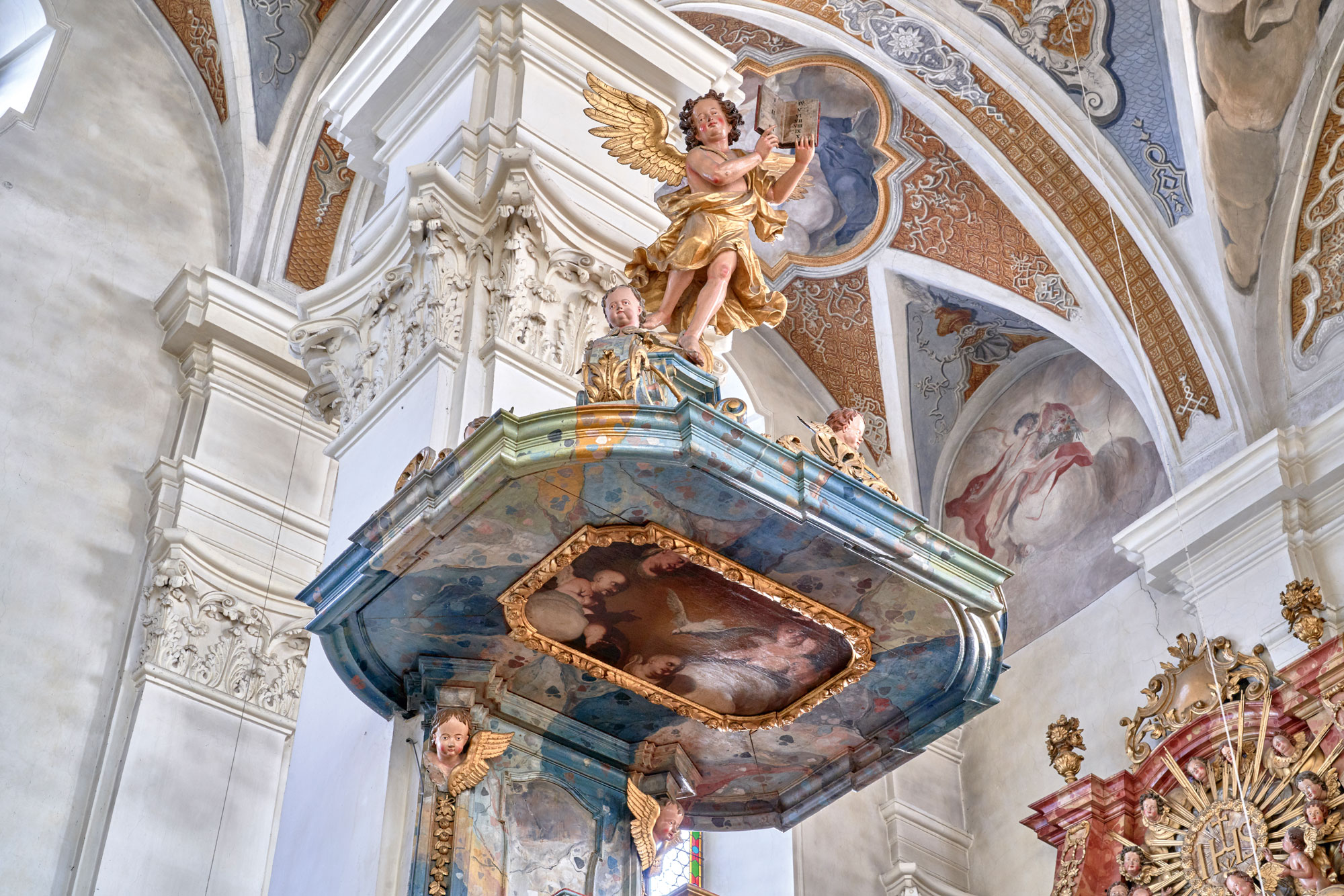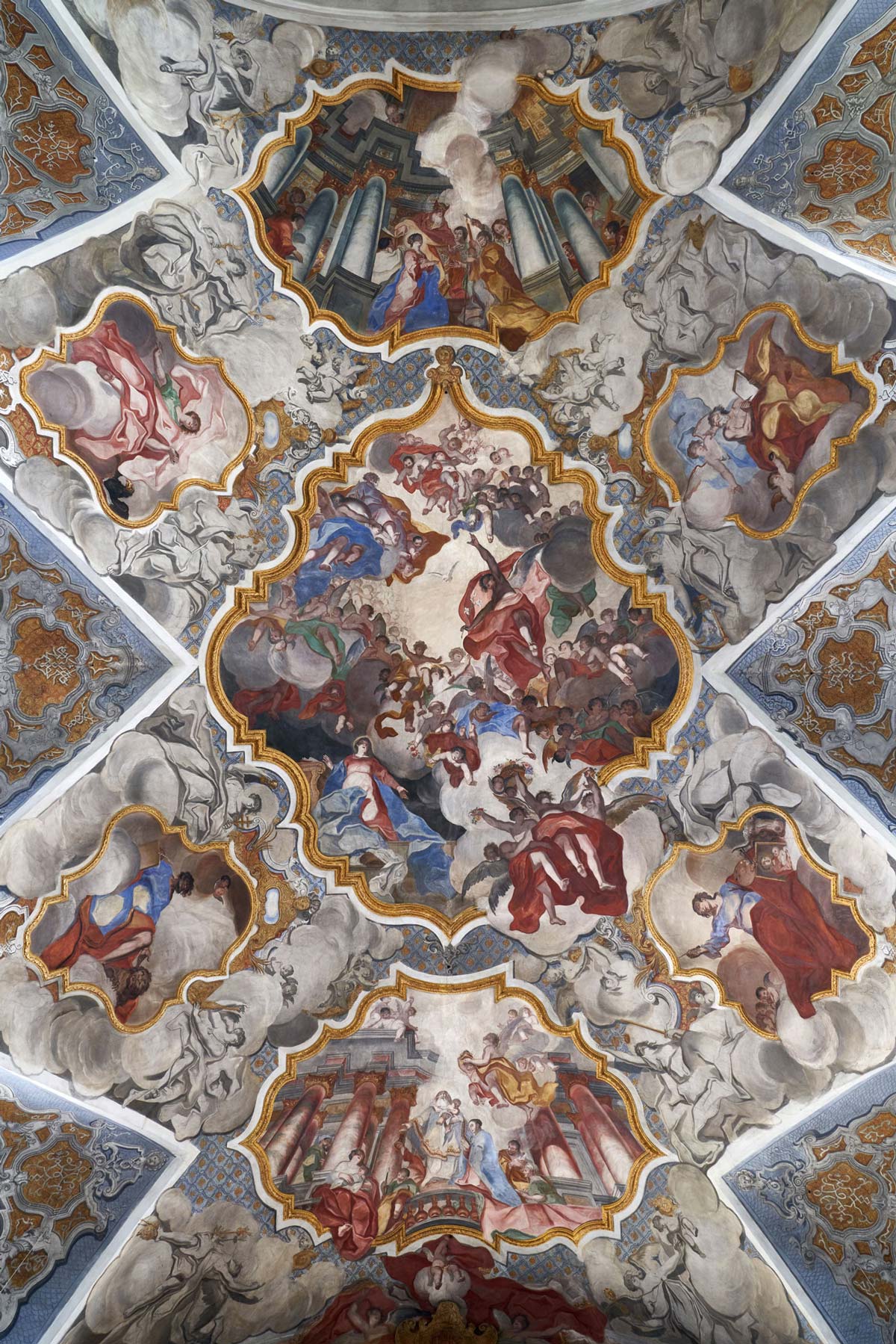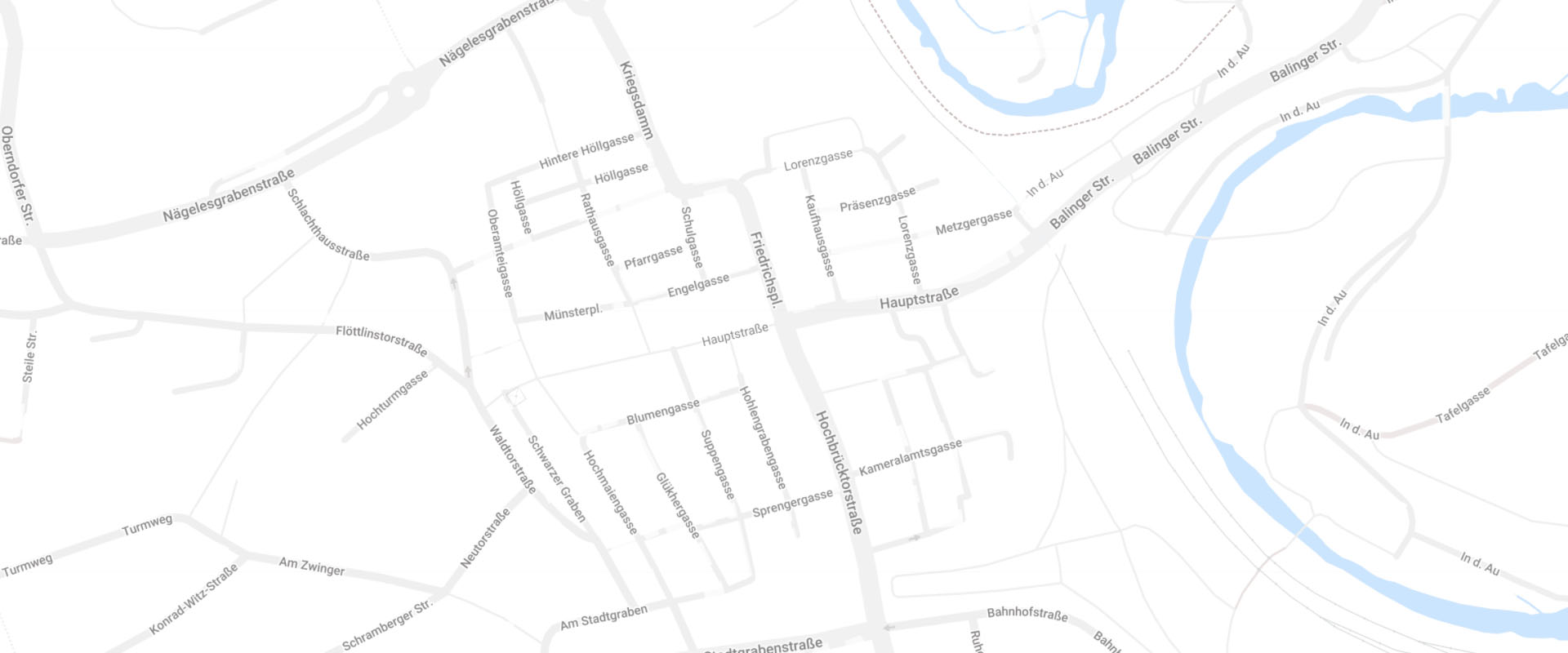The “Kapellenturm” or “Chapel Tower” in the town centre is visible from afar. At a height of 70 metres, the tower was an impressive landmark in the late medieval townscape of Rottweil. Besides this, it is one of the most important late Gothic monuments in Baden-Wurttemberg. In 1983, the Kapellenturm received the distinction of being a “Cultural Monument of National Significance”.
The start of construction dates back to the year 1330, a time when the bourgeoisie was becoming ever more influential and confident. Thus, the tower of Rottweil was approved and paid for by wealthy citizens. Adjacent to the tower, there was a smaller, Mary’s chapel with a healing fountain for people with eye complaints.
The tower in high Gothic style is square-shaped and was only half as high as it is today. It is opulently decorated with figures that are unique in their artistic expression. The representation of the Last Judgment in the tympanum over the west portal is particularly impressive. On the southern side, two prophets from the Old Testament frame both sides of the tympanum which illustrates the birth of Christ, a scene in which, today, only two angels with a star, and ox and donkey are recognisable. On the northern side, there is a striking picture of the adoration of the Magi, with the annunciation depicted above it. God the father lingers on a cloud bank above Maria and the angel, while Baby Jesus makes his way into the world with a “headlong leap”. The intact original figures can now be seen in the Lorenzkapelle art collection in Rottweil.
Only 150 years later, the restless architect Aberlin Jörg, who was also involved in the construction of the Stiftskirche in Stuttgart, started to build the eight-sided spire. A similar tent-like spire, with wooden roofing, had already been recorded in 1564 on David Rötlins historic map.
The building history of the tower is marked by restoration work, an ongoing task for generations that still continues. Traces of the structural safety measures from centuries ago are still visible on the tower today.
As early as in 1575, the western rosette was damaged by subsidence or sagging of the foundation. Hans Böhringer put it back in shape. Later he was a foreman at the Münster in Freiburg where he created his main work – the Renaissance choir screen.
We recommend that you bring binoculars for a discovery tour of the tower. In the top gallery, winged creatures and four demons, representing the vices of drunkenness and gluttony, grin at the world. They were created in the 1890s by the Rottweil sculptor German Burry.
One floor below, animal figures represent the four human temperaments. The donkey stands for melancholy, the pug dog for the sanguine, the bull for a choleric disposition and the walrus for phlegmatic personalities. These characteristic heads from the 1950s are the work of the Rottweil sculptress Germana Klaiber.
Through several phases of construction and reconstruction, the small chapel behind the tower, the “Marienkapelle”, was transformed into today’s “Kapellenkirche” with access to the “Turmkapelle”. The entrance is on the right, in the lane opposite the old grammar school. You need to book a guided tour to go up the tower.
On entering the church, you find yourself surrounded by baroque splendour, dating back to the 17th century, when the Jesuits were in charge of the grammar school and the church. The Jesuit lay brother, Joseph Firtmair, a pupil of the famous Bavarian painter and architect Cosmas Damian Asam, spent time painting the church between the years 1727 and 1733. The high altarpiece represents the Assumption of Mary, while other frescos on the choir walls depict her earthly life. The Annunciation scene on the ceiling above the nave shows the sky in radiant bliss, the little angels bouncing and tumbling merrily above the clouds.
Between Christmas and Candlemas you can marvel at a baroque rarity: a wooden nativity scene by Josef Firtmair – with life-size figures and two alternating scenes, these are The Birth of Jesus and the Adoration of the Magi.
